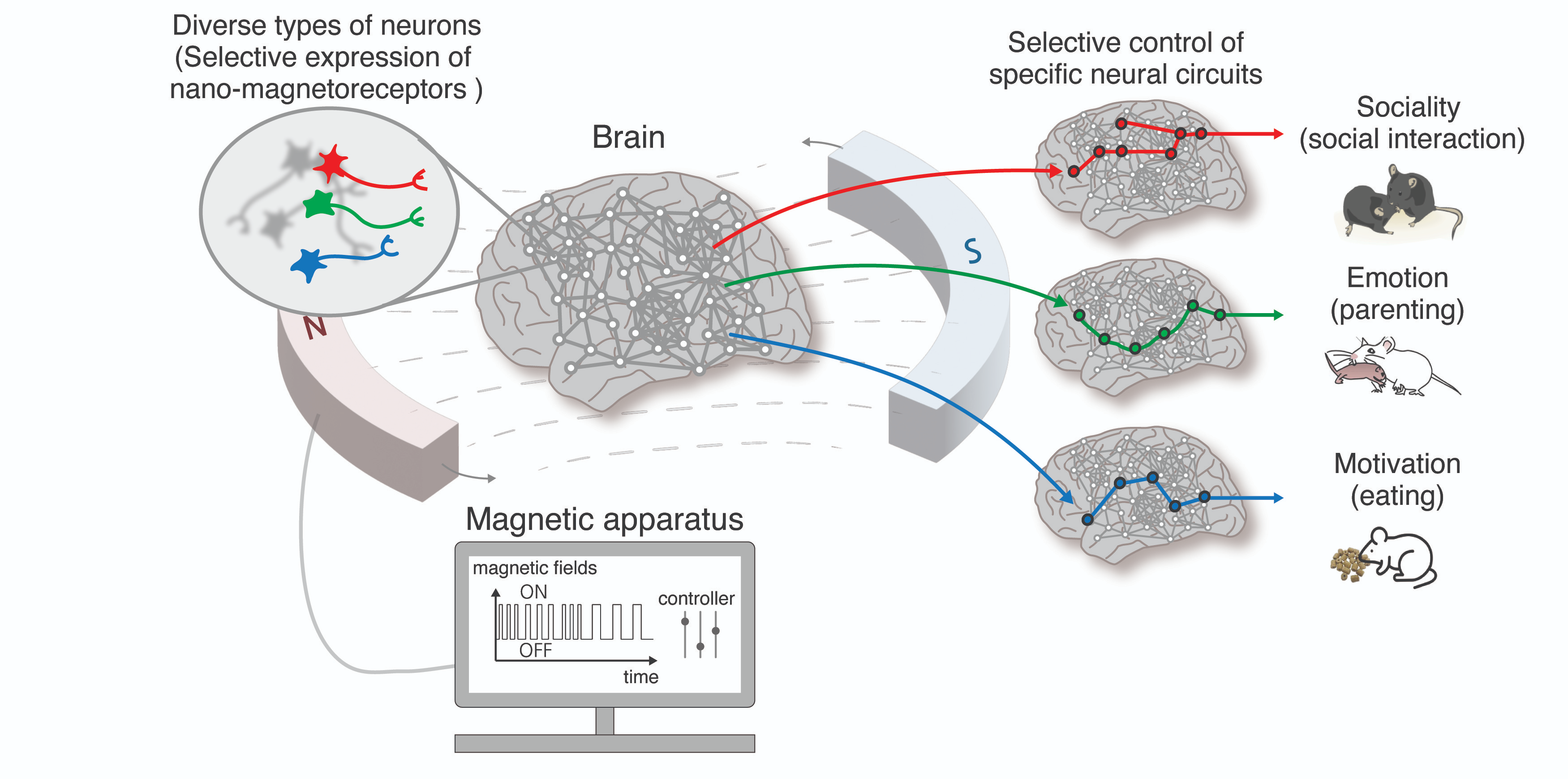The researchers have demonstrated the technology by activating specific brain circuits in mice.
The technology has been used to modify social behaviour and feeding habits in mice. (Image Credit;
Nick Fewings/Unsplash).
New Delhi: Researchers from the Korean Institute of Basic Science have developed a magnetogenetics technology dubbed Nano Magnetogenetic Interface for NeuroDynamics (Nano-MIND) that uses magnetism for wireless, remote and precise modulation of particular deep brain neural circuits. The technology has been demonstrated on mice. By targeting specific brain regions, the researchers could modulate complex functions such as emotions, social behaviours and motivation.

Overview of the nano-MIND technology. (Image Credit: IBS).
The technology uses magnetic fields and magnetised nanoparticles to activate targeted brain circuits. The researchers were able to activate neurons associated with maternal beheaviours in female mice that were not mothers, increasing nurturing behaviours such as bringing pups to their nests. The researchers were also able to target the hypothalamus to both increase and decrease appetite and feeding behaviours.
Selective activation of brain circuits using Nano-MIND
Magnetic fields are commonly used in clinical contexts for medical imaging, because of their ability to safely penetrate through biological tissue, but precisely controlling brain circuits with magnetic fields has proven to be challenging. The researchers innovated by controlling the selective expression of nano-magnetoreceptors in specific neuronal types and brain circuits, and then activating them with rotating magnetic fields, allowing for spatiotemporal control of neural activity.
Controlling the neural circuits in human brains can potentially provide scientists with valuable insights on higher brain functions including cognition, emotion and social behaviour, as well as pinning down the causes of various brain disorders. The advancement also has implications for brain-computer interfaces, or BCIs that allows for the control of external devices through thought.
The technology paves the way for advancements in neuroscience and potential therapeutic applications. A paper describing the research has been published in Nature Nanotechnology. One of the authors of the study, Cheon Jinwoo says, “This is the world’s first technology to freely control specific brain regions using magnetic fields. We expect it to be widely used in research to understand brain functions, sophisticated artificial neural networks, two-way BCI technologies, and new treatments for neurological disorders.”
Follow us on social media

